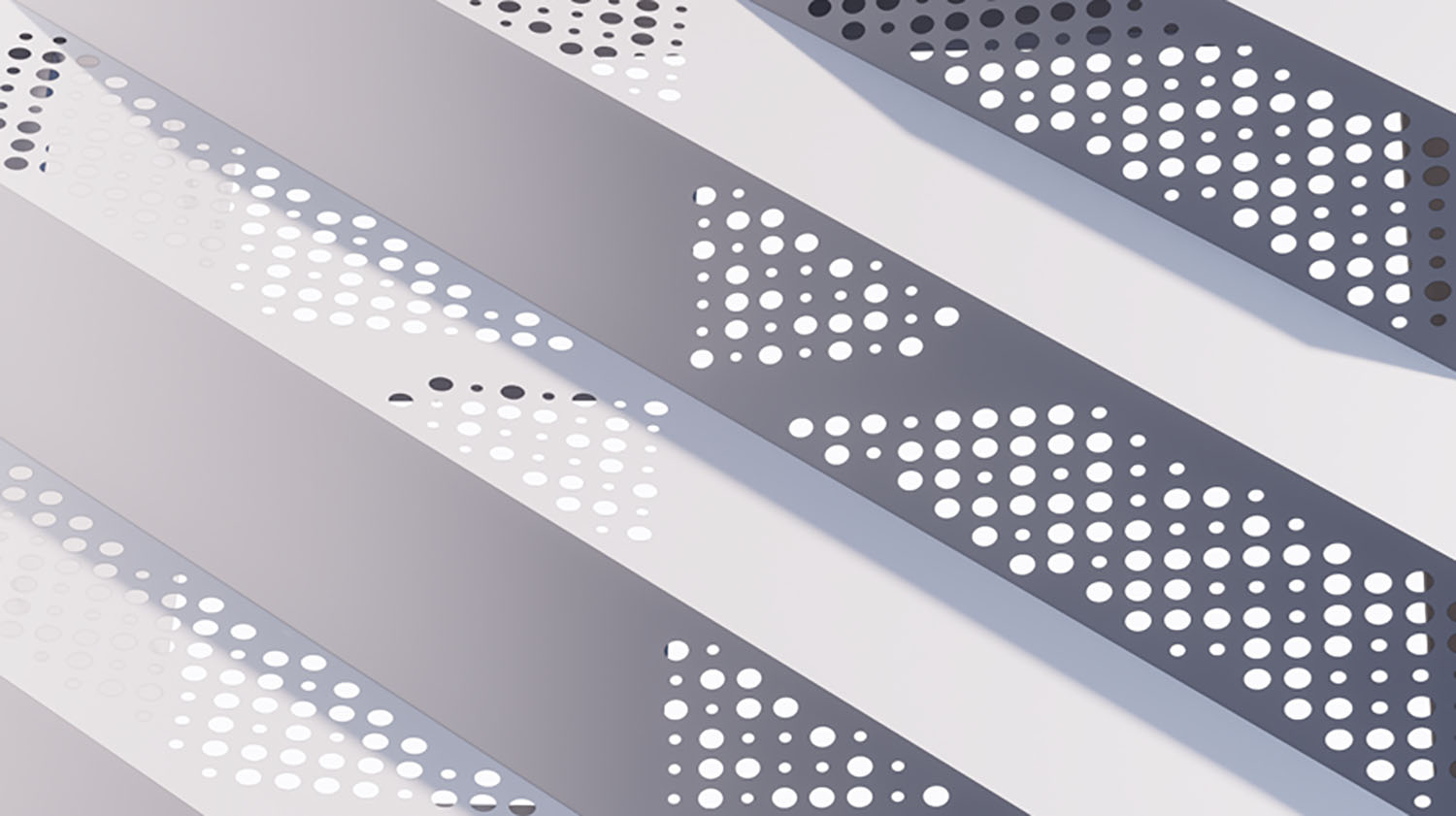3D Aluminum Art Deco: A Modern Take on a Timeless Design Movement
Introduction: The Revival of Art Deco in the Modern Age
3D Aluminum Art Deco: Art Deco is a design movement that continues to captivate with its luxurious aesthetic, geometric forms, and fusion of elegance and function. First emerging in the 1920s and 1930s, Art Deco influenced architecture, fashion, interior design, and decorative arts. Today, this timeless style is experiencing a resurgence, thanks to new materials and technologies. Among the most innovative reinterpretations of this design language is 3D aluminum Art Deco: a modern, industrial evolution that fuses traditional motifs with contemporary techniques.
In this comprehensive guide, we’ll explore the origins of Art Deco, the unique role of aluminum in modern design, and how 3D fabrication is revolutionizing this beloved aesthetic. From home decor to commercial applications, discover how 3D aluminum Art Deco is transforming spaces with a fresh, futuristic edge while remaining rooted in heritage.
1. The Foundations of Art Deco
1.1 Historical Origins
Art Deco, short for Arts Décoratifs, originated in France just before World War I and reached global prominence in the 1920s and 1930s. It emerged as a reaction against the organic curves of Art Nouveau, favoring symmetry, geometric shapes, and sleek lines. Influences ranged from Cubism and Bauhaus to Egyptian and Aztec motifs, often merging the ancient with the modern.
1.2 Key Features
Some defining characteristics of traditional Art Deco include:
- Symmetry and geometry: Zigzags, chevrons, sunbursts, and stepped forms
- Luxurious materials: brass, chrome, ebony, lacquer, ivory, and marble
- Bold colors and contrasts: Black and gold, emerald green, deep blues
- Machine-inspired aesthetics: Reflecting a fascination with the industrial age
2. The Rise of Aluminum in Design
2.1 A Brief History of Aluminum in Art and Architecture
Aluminum was once considered more valuable than gold due to its rarity and difficult extraction process. However, by the late 19th century, technological advancements made it widely accessible, and it soon became a favored material in architecture and product design due to its:
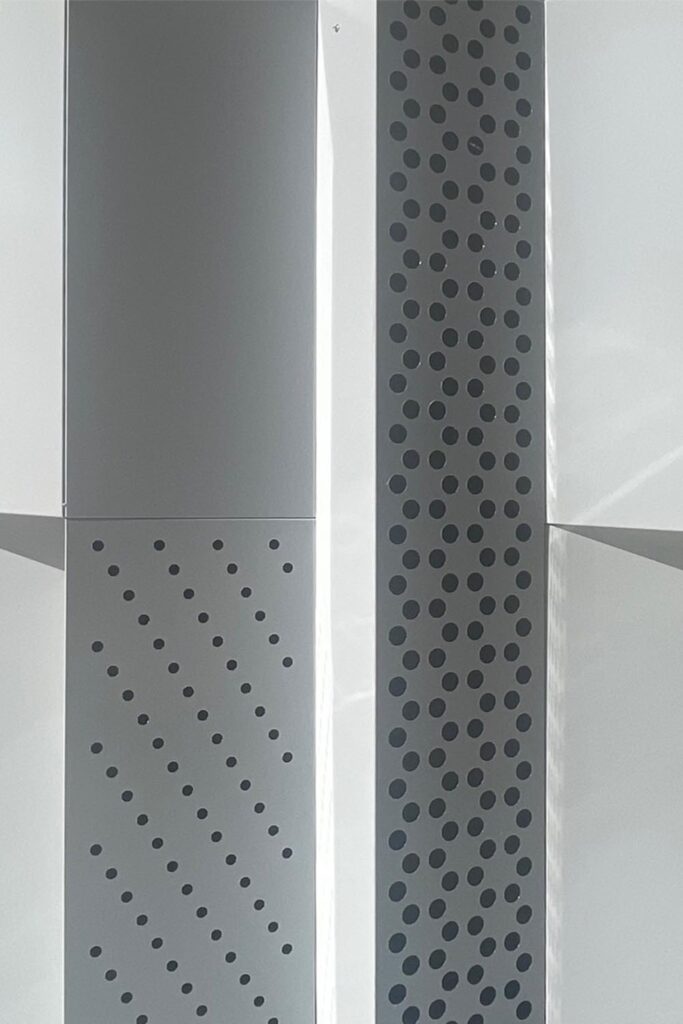
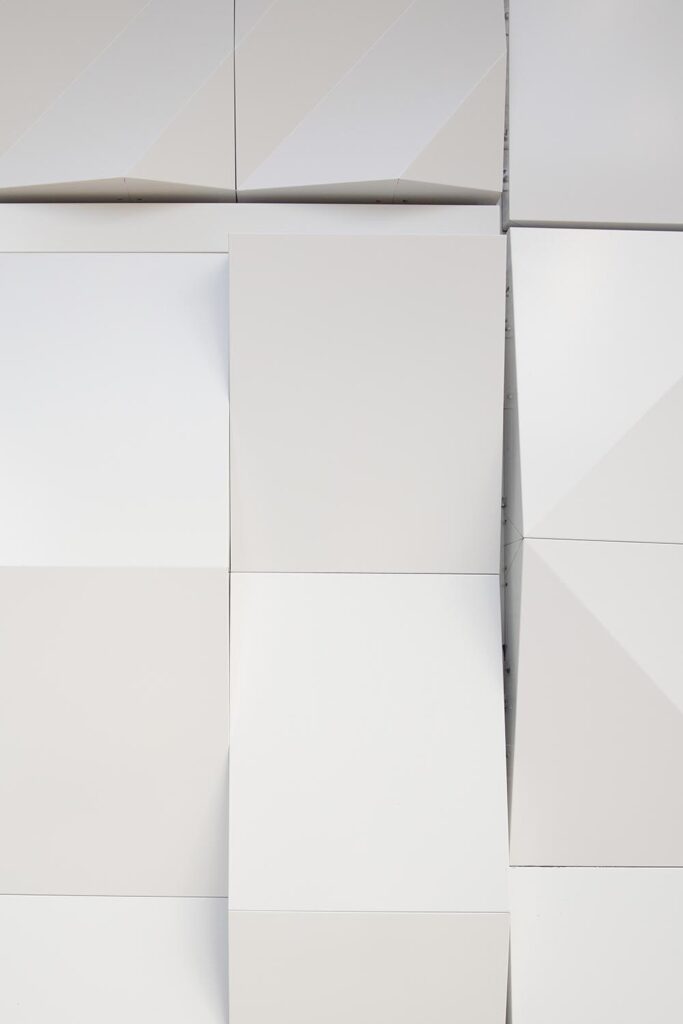
- Lightweight properties
- Resistance to corrosion
- Strength and durability
- Shiny, modern appearance
Aluminum began appearing in decorative architecture, aviation, and even early Art Deco pieces, although more sparingly than traditional metals like chrome and brass.
2.2 Why Aluminum Suits Art Deco
Modern Art Deco designers have embraced aluminum for its compatibility with the movement’s original ideals. Its sleek finish, workability, and futuristic feel align perfectly with Art Deco’s machine-age ethos. It’s also:
- Highly moldable, allowing for intricate 3D motifs
- Cost-effective, especially in large-scale architectural applications
- Eco-friendly, as it’s infinitely recyclable
3. Enter the Third Dimension: The Power of 3D Design
3.1 What Is 3D Art Deco?
3D Art Deco refers to the integration of depth and relief into traditional two-dimensional Art Deco patterns. With advanced technologies such as CNC machining, 3D printing, and laser cutting, designers can now create Art Deco elements that pop out of flat surfaces, offering visual dynamism and texture.
When these techniques are applied to aluminum, the result is a striking combination of vintage opulence and industrial minimalism—a new aesthetic language perfect for modern architecture, sculpture, furniture, and decor.
3.2 Tools and Technologies
To create 3D aluminum Art Deco, artists and designers commonly use:
- CNC milling for precise carving of aluminum panels
- Laser cutting and etching for fine geometric detailing
- 3D printing (with aluminum filament or casting molds) for customized pieces
- Anodizing and powder coating for color and surface protection
These tools not only preserve the integrity of Art Deco’s linear beauty but also allow for experimentation with scale, layering, and finishes that weren’t possible a century ago.
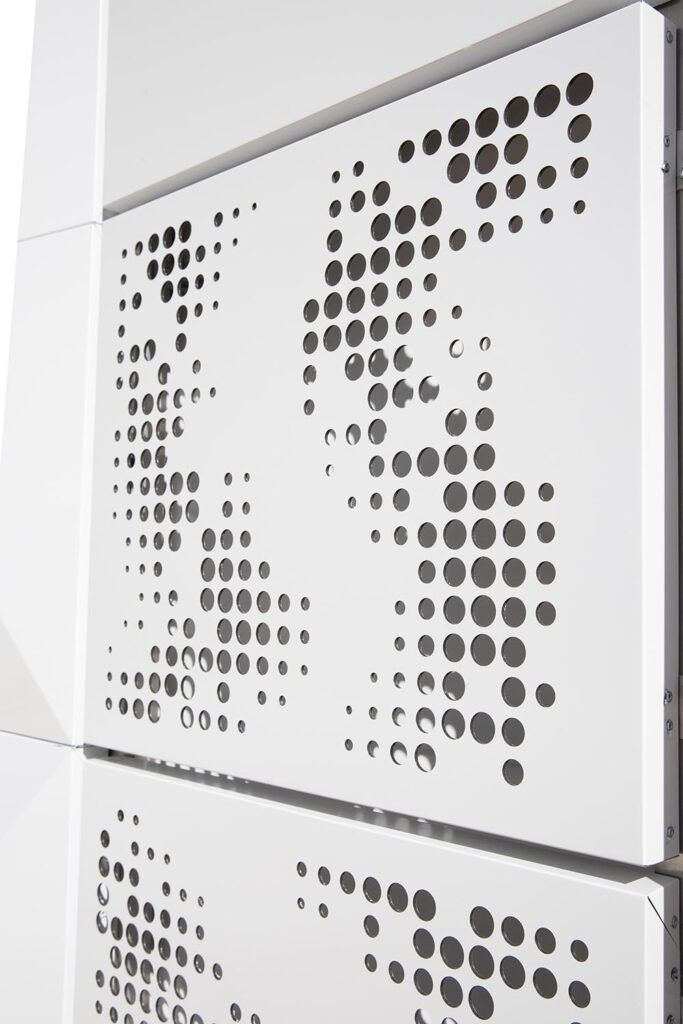
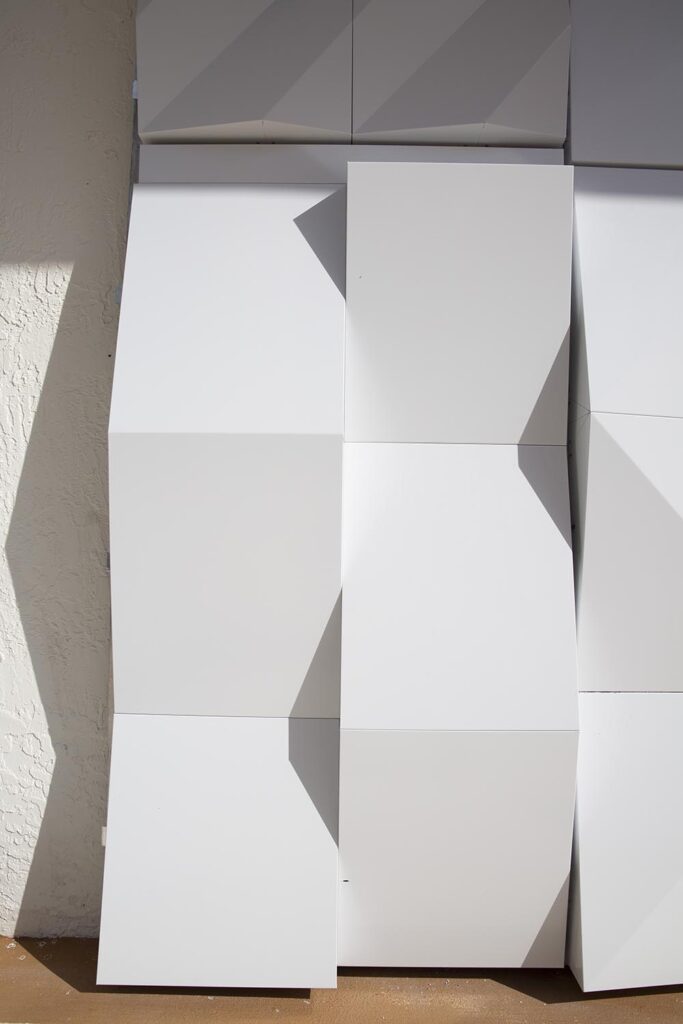
4. Applications of 3D Aluminum Art Deco
4.1 Architectural Features
From building facades to elevator doors and ceiling panels, 3D aluminum Art Deco is revolutionizing architectural elements. It’s especially prominent in:
- Hotels and luxury residences
- Corporate headquarters
- Cultural institutions and theaters
A popular example is the renovation of Art Deco-style buildings in Miami, where aluminum installations add new life while preserving the historical character.
4.2 Interior Design
In interior spaces, 3D aluminum Art Deco is used to create:
- Wall panels with geometric bas-reliefs
- Room dividers with intricate patterns
- Decorative ceilings that reflect light in dazzling ways
- Fireplace surrounds and mirror frames with stepped contours
Aluminum allows designers to create dramatic focal points without adding significant weight, making it ideal for contemporary interiors.
4.3 Furniture and Lighting
Designers are also using aluminum to produce:
- Consoles and coffee tables with repeating fan motifs
- Chairs and bar stools with stylized angular legs
- Chandeliers and sconces that play with light and shadow through 3D layering
These pieces often mix aluminum with other materials like glass, wood, and velvet, staying true to the Art Deco ethos of combining materials for visual richness.
4.4 Wall Art and Sculpture
Artists and fabricators have embraced 3D aluminum to create:
- Abstract wall sculptures with stepped and radiating motifs
- Aluminum bas-reliefs echoing skyscraper silhouettes
- Free-standing sculptures for galleries or outdoor plazas
Because aluminum is weather-resistant, it is perfect for public art installations in Art Deco style.
5. The Fusion of Modernism and Heritage
5.1 Bridging Eras Through Design
3D aluminum Art Deco represents a fascinating bridge between past and future. It respects the visual language of the 1920s and 30s while embracing materials and techniques of the 21st century. This makes it ideal for projects that want to feel both nostalgic and cutting-edge.
Designers often reinterpret classic motifs—such as sunbursts, arches, and zigzags—into volumetric elements that feel sculptural and fresh. These updates pay homage to the original Art Deco masters while reimagining the style for today’s tastes.
5.2 Popular Niches and Markets
This design trend has gained traction in:
- Luxury real estate developments
- Boutique hotels
- High-end retail stores
- Art galleries and museums
Additionally, it appeals to collectors, architects, interior designers, and homeowners who appreciate vintage glamour combined with modern efficiency.
6. Sustainable Elegance: The Eco-Appeal of Aluminum
Sustainability is a growing concern in all design fields. Fortunately, aluminum is one of the most eco-conscious materials available:
- 100% recyclable with no loss in quality
- Energy-efficient to transport due to its light weight
- Durable and corrosion-resistant, reducing the need for replacement
By incorporating aluminum into long-lasting Art Deco installations, designers reduce both waste and environmental impact—adding another layer of value to the aesthetic.
7. Customization and Personal Expression
7.1 Tailored Designs
One of the greatest advantages of 3D aluminum Art Deco is the ability to fully customize designs. Whether for a private home or a public building, clients can work with fabricators to:
- Choose from thousands of historical motifs
- Adjust scale, thickness, and depth
- Select custom finishes (brushed, mirrored, matte, powder-coated colors)
- Integrate lighting or multimedia components
This level of personalization makes each piece unique—a work of art in itself.
7.2 Collaboration Across Disciplines
These projects often involve multi-disciplinary collaboration among:
- Architects
- Industrial designers
- Metal fabricators
- Lighting engineers
- Historians and Art Deco scholars
Such partnerships ensure the final product is not only visually striking but also structurally sound and culturally relevant.
8. Notable Examples and Case Studies
8.1 The Streamline Hotel, Miami Beach
This renovated hotel features custom aluminum wall panels in its lobby and rooftop bar. The panels recreate wave and fan motifs common in Art Deco, but in a three-dimensional format. LED lighting behind the aluminum creates a glowing effect, evoking the glamour of old Hollywood.
8.2 Private Residence in Dubai
An ultra-luxury villa in Dubai incorporated 3D aluminum murals depicting stylized cityscapes and palm trees. Each piece was fabricated with CNC routing and anodized for a gold finish. These panels function as both art and acoustic dampeners in vast open-plan living areas.
8.3 Art Installation in Los Angeles
An open-air sculpture garden in LA recently debuted an aluminum series titled “Sunrise Deco,” featuring a sequence of monumental arcs and spirals inspired by the 1930s skyline. These 3D forms not only cast dynamic shadows throughout the day but also double as interactive spaces for visitors.
9. DIY and Small-Scale Projects
For artists, hobbyists, and small-business owners, 3D aluminum Art Deco isn’t out of reach. Many suppliers now offer:
- Pre-cut aluminum patterns ready for wall mounting
- Modular kits for creating panels and headboards
- Tutorials and templates for designing your own 3D elements
Additionally, desktop CNC machines and small-scale laser cutters have become more affordable, opening the door for creative experimentation at home.
10. The Future of 3D Aluminum Art Deco
As both technology and appreciation for heritage design grow, the future of 3D aluminum Art Deco looks exceptionally bright. We can expect:
- More parametric designs driven by algorithms
- Greater integration of smart lighting
- Augmented reality tools to preview installations
- Expanded use in urban design and placemaking
The blend of nostalgia and innovation ensures this design form will evolve but never go out of style.
Conclusion: Art Deco Reimagined for a New Century
3D aluminum Art Deco is more than a design trend—it’s a statement of timeless elegance adapted for the contemporary world. It preserves the rich visual heritage of one of the most iconic design movements in history while embracing the materials, sustainability, and digital tools of the present.
Whether in soaring architectural facades or delicate home accents, this style offers texture, glamour, and durability. For those looking to celebrate history without sacrificing modernity, 3D aluminum Art Deco provides the perfect bridge—a symphony of past and future, crafted in metal and brought to life in three dimensions.

